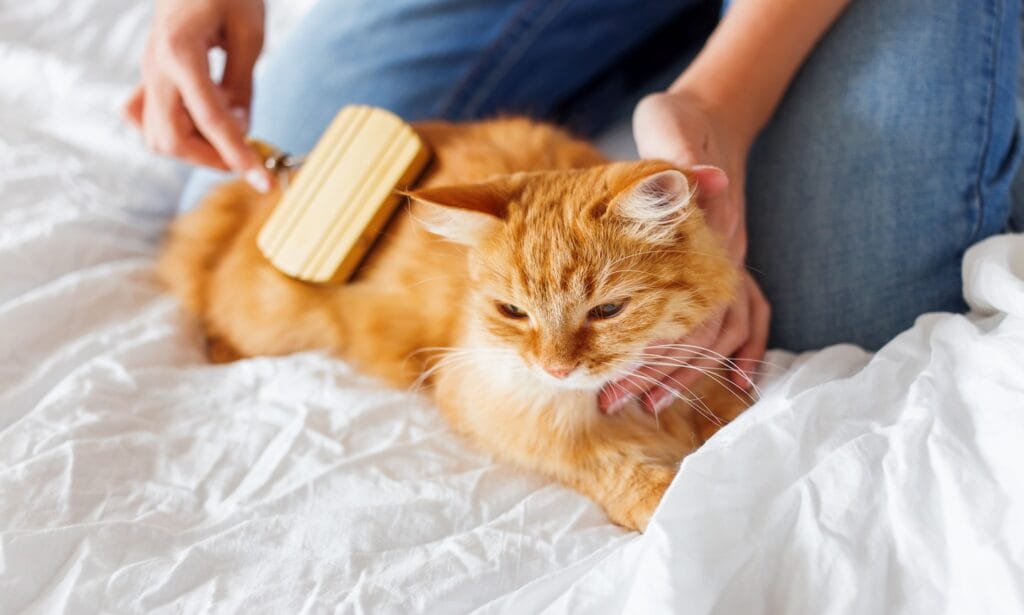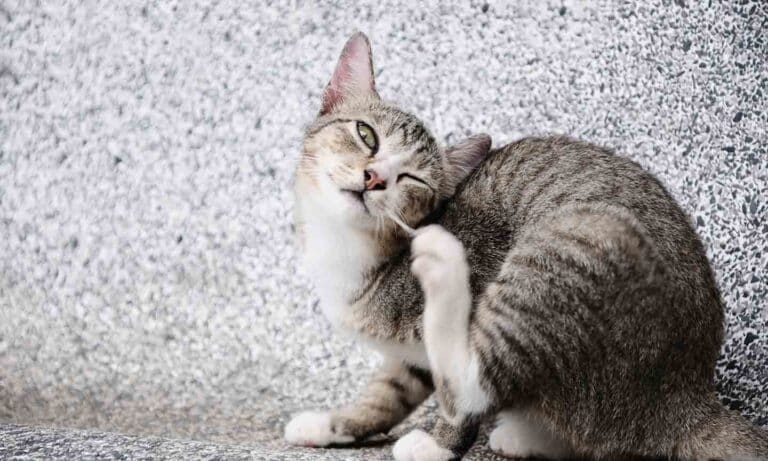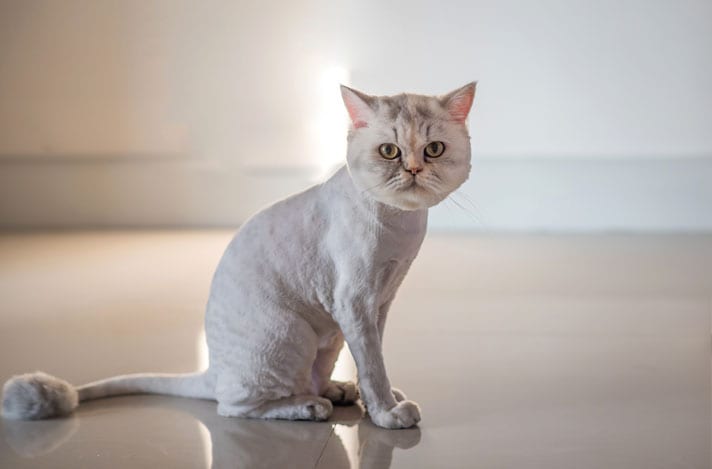While cats are notorious self-cleaners, that doesn’t mean they’ve got all aspects of their hygiene taken care of themselves. Pet parents need to brush cats regularly—daily or weekly, depending on the cat.
But you can’t grab any old brush or comb and expect your kitty to sit still for a long grooming session. Here’s how to brush a cat the right way.
In This Guide:
Why Brushing Cats Is Important
Brushing and combing a cat is a must for a few reasons:
- Regular grooming stops your cat’s fur from matting, which can be painful and cause larger skin problems.
- Brushing cat hair consistently means that your cat won’t swallow fur as they groom themselves—and that you won’t have to clean yacked-up hairballs
- Flying fur from your kitty can also be dramatically reduced, as brushing removes loose hair your cat is shedding.
- Grooming strengthens the bond between you and your cat.
A consistent brushing routine is important for every cat—not just longhaired breeds. Shorthaired cats also need grooming, says Jacque Opp, a professional pet groomer in Bismarck, North Dakota.
Brushing a cat has health benefits, too. Regular grooming stimulates the skin and distributes natural oils throughout the coat, resulting in a shinier and healthier appearance, says Sabrina Kong, DVM.
“[Grooming also allows] for early detection of potential health issues,” Dr. Kong says, as it’s the perfect time to check your kitty for skin problems, fleas, or any unusual lumps.
Does Your Cat Need To Be Brushed?
All cats can benefit from regular brushing, though the frequency and necessity depend on their coat type, Dr. Kong says.
Longhaired cats, such as Persians or Maine Coons, typically require daily brushing to prevent mats and tangles. Short-haired breeds like the American Shorthair may only need brushing once or twice a week to manage shedding and maintain coat health.
Signs your cat needs to be brushed include:
- Visible tangles
- Excessive shedding
- Frequent hairballs
- Constant self-grooming
The Best Cat Brushes
Choosing the right brush for your cat depends on your kitty’s coat type or what you’re looking to achieve.
- A slicker brush is good for all fur types to remove loose hair, dirt, and tangles, but not ideal for kitties with sensitive skin.
- A wide-tooth comb is a better option for removing tangles and mats in long-haired cats.
- Bristle brushes work well on short-haired cats to remove loose hair and stimulate the skin.
- Rubber grooming mitts are great for cats with sensitive skin to provide gentle grooming.
- A deshedding tool is beneficial for cats with denser hair or a thick undercoat.
- A dematting rake is a double-sided tool that works through tough tangles and thick mats without scraping your cat’s skin.
How To Brush a Cat
The key to a positive brushing experience is to keep your cat comfortable and content.
- Do not restrain your cat. ““This will only add stress and make things more difficult,” says Liz Gapinski, owner of Sunshine Pet Spa in Minneapolis. It also helps to brush your cat in a quiet, comfortable place where they feel safe.
- Keep initial grooming sessions short. Gapinski recommends letting your cat take breaks until they get used to the process.
- Brush in the direction of your cat’s fur growth. Always brush with the grain of the fur to avoid making your cat uncomfortable. Be gentle and use soft strokes, especially around sensitive areas like the belly and legs.
- Start from the rear end, instead of brushing head to tail. “Working from head to tail is asking the comb to go through massive amounts of fur,” Opp says. “When you go little by little, working toward your cat’s head, it’s much easier to get through all the fur.”
- Work out mats gently. Use a comb or dematting tool and take care not to pull on the skin. Patience and consistency are key to tackling mats.
Tips for Brushing Cats
Brushing your kitty shouldn’t be stressful for either of you. Here are some extra tips to make these sessions more enjoyable for everyone:
- Invest in quality grooming tools that work for your cat’s coat type.
- Incorporating brushing into your normal day-to-day routine helps your cat become accustomed to the process, making it less stressful in the long run.
- While your cat may do a great job keeping themselves bathed and brushed now, they might need a little more assistance as they age. Plan ahead and get your cat used to being brushed ASAP.
- Make brushing positive. A high-value reward after your grooming routine is always beneficial for positive reinforcement. “Treats like Churu® or a lick mat with wet food can be a great resource while brushing your cat!” Gapinski says.
FAQs About Brushing Cats
Q:Do cats like to be brushed?
A:This can depend entirely on your cat. Some cats may love being brushed, while others find the sensation to be annoying or uncomfortable. The best way to get your cat used to regular brushing is to start early with short sessions.
Q:What happens if I don’t brush my cat?
A:Cats who aren’t brushed regularly are prone to shedding, hairballs, tangles, and mats. Mats can be painful and lead to skin infections if not treated. In serious cases, cats can become constipated or develop intestinal blockages from ingesting too much hair during self-grooming.
Q:Do cats feel better after being brushed?
A:Brushing can help a cat feel better because it removes irritation from tangles and matting.
Learn more about grooming cats
Share:













